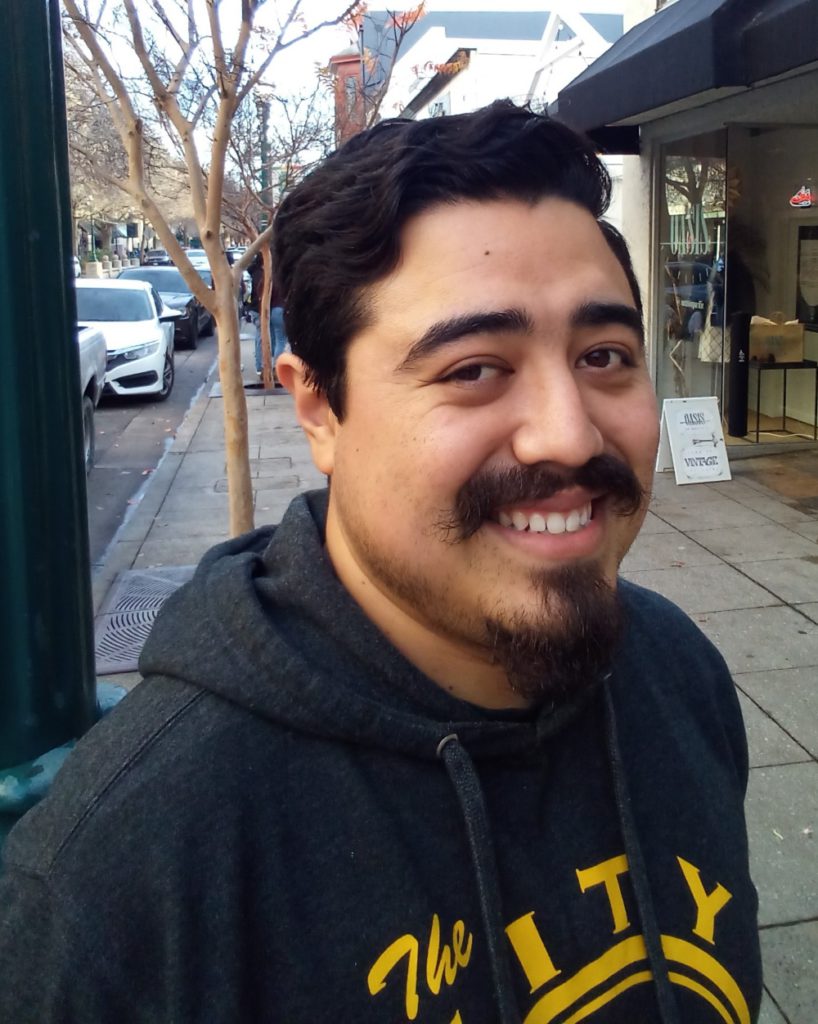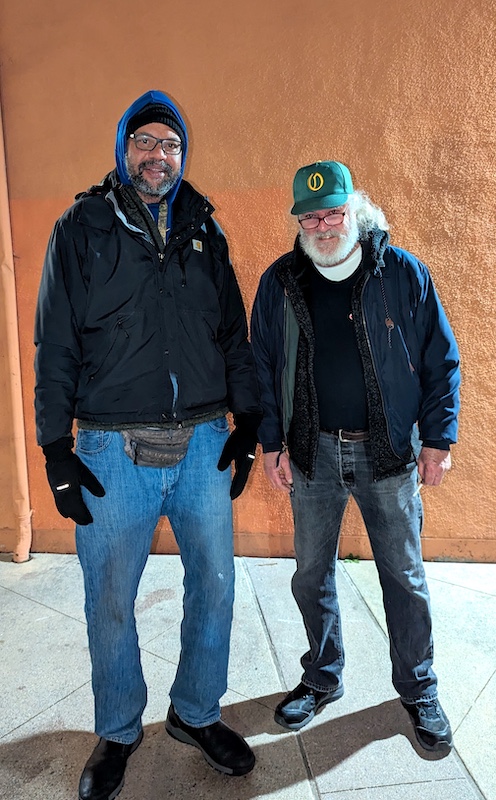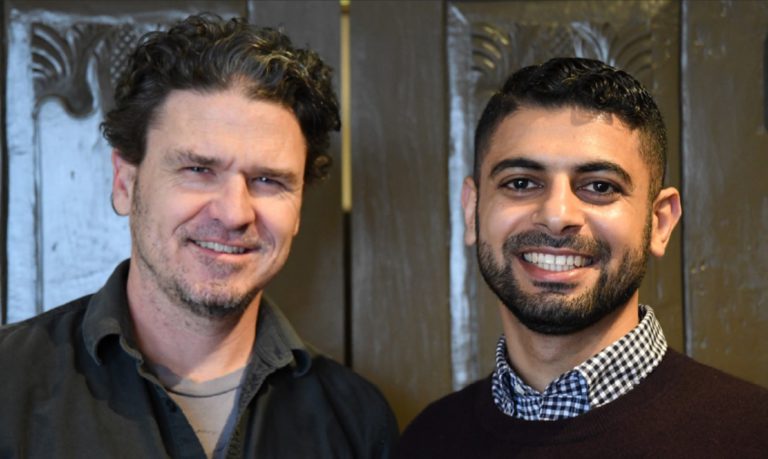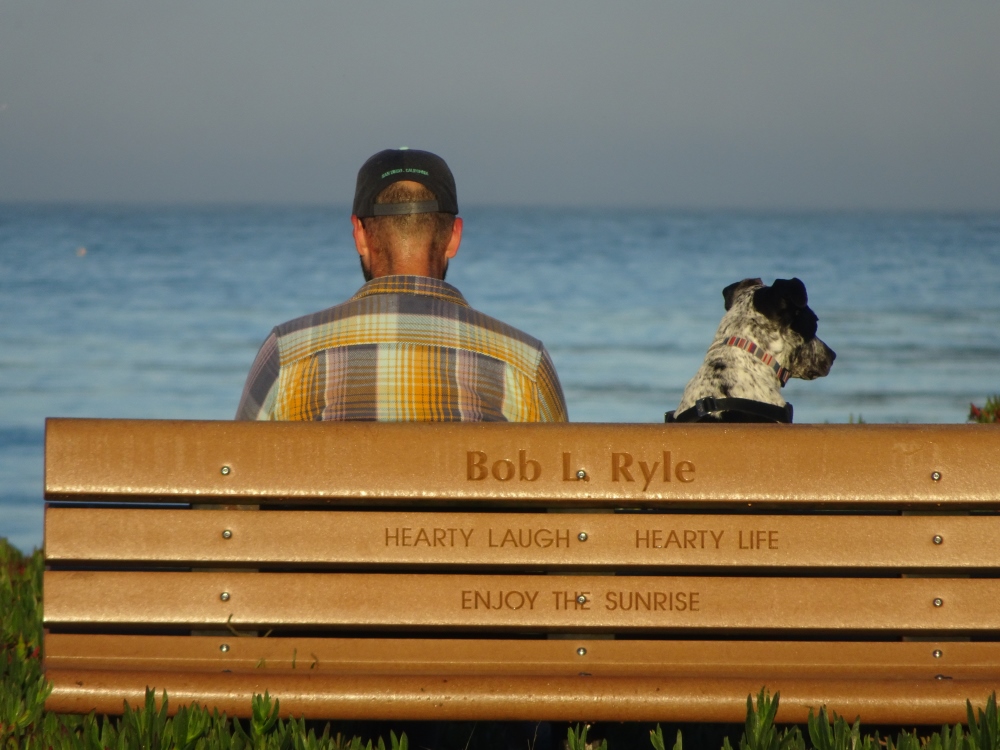Local Santa Cruz organization, Our Community Reads, in collaboration with The Friends of the Aptos Library, combined with the tireless work of the volunteers from Friends of the SC Public Libraries, has prepared a truly impressive month-long festival.
This unique experience features 14 engaging events, throughout Santa Cruz County, that focus on the book, The Monk of Mokha by Dave Eggers. The book is a true story about a San Francisco resident, Mokhtar Alkhanshali, who travels to Yemen during a civil war to find the perfect coffee bean. So, throughout this one-month celebration, the caffeinated crux that ties it all together is America’s favorite legal stimulant, coffee.
Our Community Reads, Program Chair, Denise Ward is bristling with energy about 2024’s itinerary. “We have 14 events this year because we were so thrilled with the book,” she says.
From the behind-the-scenes roasting process of Verve coffee, to an art workshop at the Felton Library, to an aria of Johann Sebastian Bach’s Coffee Cantata (Bach drank 30 cups of coffee a day!) sung at the downtown Santa Cruz Library, one cup of Joe you don’t want to miss is an evening of conversation with The Monk of Mohka’s author, Dave Eggers.
Dave Eggers is a prolific, internationally acclaimed author, who also has a passion for activism that includes being a co-founder of the literacy project, 826 Valencia, the human rights nonprofit Voice of Witness and is now lending his prowess and voice to fighting the rampant book bans, that plague our country.
The Circle, (Eggers 2013 dystopian novel), along with about 600 other books, was banned a few weeks ago in Orlando, says Eggers.
“So we’re doing what we did in Rapid City, South Dakota, which was to offer any of these banned books free to high schoolers in that district. In Rapid City, 5 books were banned last year, including The Circle, and for the last year and a half, through the local indie bookstore, we’ve offered high school seniors all five books for free.
“To date about 500 sets of these books have been given away. So in the end, far more young people in Rapid City are in possession of these banned books because they were banned.
“It’s the usual counter-productive nonsense that book-banners specialize in. Art Spiegelman’s Maus, too, has been read by infinitely more people now than before it was banned a few years ago.”
With illiteracy rates topping 21% in America the dumbing down of our populace is nothing more than a way to control the masses, Eggers says.
He’s clear on what the consequences of book banning will achieve.
“It goes without saying that a healthy democracy relies on an informed, well-educated citizenry. I should say that I think the stat you’re citing is for English proficiency, not necessarily across-the-board literacy, given there are millions of Americans who read and write in another language but haven’t mastered English yet.
“Still, we have to make basic English literacy classes more readily available. In California, there are a lot of classes, but a good portion of them cost money. I love it when public and private K-12 schools offer literacy classes at night and on weekends — often for the parents and grandparents who have kids at that school. These classes can be taught effectively by volunteers, and everyone wins. That’s just one thought,” says Eggers.
With all that in mind, the public library is still a place where one can immerse themselves in new thoughts, different worlds and experiences and grow as a constantly evolving human.
Eggers values what founding father Benjamin Franklin contributed to America with the first library.
“One of my oldest friend’s mom was a librarian at our local library, so I had the experience of walking in and seeing Mrs. Wolfgram there most days. It seemed just an extension of home, really. The first grown-up book I really read on my own, for fun, was Dune, and it required a unique library-like environment,” says Eggers.
“I tell this story to anyone who has kids who don’t love sitting still (I was like that) and who don’t read a lot on their own (I was like that, too). Until high school I always read whatever my teachers told me to read, but it wasn’t until I was a freshman that I had that Formative Experience with Fiction that I think you’re talking about.
“We had an advisory period, where you would either meet with your counselor, or read. If you didn’t have an appointment with the counselor, he sent us into a separate room, where there was nothing but books and pillows.
“We had nothing else to do for an hour, couldn’t bring in homework, and of course this was long before phones or computers. It was only then, in this extreme sort of setting free of distractions or other options that I found a book that looked cool, and began reading.
“I read the first two books in the Dune series over the next month or so, and that was the first time I felt that experience of having lived another life. I walked around in a daze. I’d chosen a book, and I’d walked through an entirely different existence that felt as real as my own,” says Eggers.
Eggers is adamant that reading is instrumental in young people developing their brains.
“And the only way I — or kids now — can do that is if they’re given time to read. Away from TVs and phones, away from all other options and distractions. Even if it’s 30 minutes a day, we have to give kids this time.
“And better yet, model the behavior for and with them. As corny and impractical as it sounds, the happiest people I meet are the ones who have a family reading period every day or so. Some even read aloud, together. That’s how you make a reader,” says Eggers.
Eggers was recently in Highwood, Illinois, right near where he grew up. He was interviewing people who had witnessed the Fourth of July massacre in Highland Park, which is next door to Highwood.
“Highwood has a high percentage of recent immigrants, and (their library) has become the most trusted place for those newcomers to get information about legal issues, about Covid, about interactions with police, and when the massacre happened, they brought on grief counselors and therapists to work with their patrons.
“In most cities, and in so many smaller towns, too, libraries have become front-line providers of so many services. It’s astonishing, and sometimes you wish the librarians weren’t stretched so thin and asked to do so much.
“But when I’ve interviewed librarians, there’s an activist strain there, too, which has been extra-activated since 2016 in particular. They’re the ones combating hate, misinformation, xenophobia, ignorance, book-banning, the list never ends.
“But in a way it makes sense that it’s libraries that have become this hub. Librarians are activists at heart, and as vital to our democracy as any elected leader,” says Eggers.
It’s become obvious, to anyone paying attention, that reading has become politicized.
“Trump has admitted that he hasn’t read a book since college (and even then, can’t remember any books he read in college). So we had a president of the most powerful nation on Earth who doesn’t read. That’s tragic, and it’s embarrassing, and it trickles down. But these waves of censorship and ignorance have come and gone dozens of times in American history, and as long as we keep fighting, the forces of enlightenment and free thinking will win out. They always have and always will,” says Eggers.
How does a widely acclaimed, superhero, literary novelist relax? Eggers goes to his favorite library where he sits by the window in a cozy chair and reads and writes. But, he’s not about to name the branch and ruin his Fortress of Solitude. So you, dear reader, will need to go, in person, and engage, with one of the most brilliant minds of the 21st Century. Tickets are moving quickly, don’t hesitate.
This event takes place Jan. 24–Feb. 27. The Our Community Reads Passport allows you to attend all the events. Single day options are also available. For more information please go to www.SantaCruzPL.org For the full schedule of events, please visit Good Times online.
SCHEDULE OF EVENTS
1/24 WED 11am
Book Discussion
Join your fellow readers to talk about our 2024 selection and discuss major themes in depth. Casey Coonerty Protti, owner of
Bookshop Santa Cruz, will facilitate the conversation. Sandwiches provided by Aegis Living Aptos.
The Loft coffee shop — 2701 Cabrillo College Drive, Aptos
1/30 TUE 7pm
An Evening with Dave Eggers
Monk of Mokha author Dave Eggers talks about the multiyear collaboration that became the story of Mokhtar’s quest, traveling
from San Francisco to the remote coffee farms of Yemen in search of the world’s most dangerous cup of coffee. Questions from the
audience are encouraged.
Radius Gallery at the Tannery Arts Center — 1050 River St #127, Santa Cruz
2/2 FRI 6pm
Sacred Brew? The Religious, Political, and Cultural Role of Coffee in Yemen
Dr. Flagg Miller, UC Davis Professor of Religious Studies, talks about the role coffee plays in Yemeni culture and about his current
coffee-growing research project in Yemen. Dr. Miller’s academic focus is on cultures of modern Muslim reform in the Middle East,
especially Yemen. Dessert and coffee will be provided.
Fireside Room, Scotts Valley Library
2/6 TUE 7pm
Yemeni Stories: The Yemeni Immigrant Experience
Jehan Hakim, a 2nd-generation Yemeni-American Muslim, founder of the Yemeni Alliance Committee and board member of Just
Foreign Policy, will join us for a virtual talk from Texas. Her experience spans interfaith coalition building, Diversity, Equity and
Inclusion training, and consulting. Geneffa Jahan, Professor of English at Cabrillo College, will moderate further discussion, and there
will be a bag of Harazi Blend Yemeni Style coffee for a lucky audience member!
Ow Family Community Room, Capitola Library
2/7 WED 1pm
Coffee Warms the Heart (art workshop)
Hearts and flowers are familiar symbols of love. With Valentine’s Day just a week away, you’ll create a bouquet or a greeting card
using coffee paint as your medium. Artist Lise Bixler leads this fun art workshop. No experience needed. All materials supplied.
Felton Library Community Room
2/10 SAT 11am
Writing Under the Influence of Coffee! (workshop)
Starting with a few coffee-flavored writing prompts to get you motivated, facilitators June Langhoff and members of the Santa Cruz
chapter of Shut Up & Write follow up with silent writing, and end with optional sharing. Loads of encouragement and coffee will be
provided.
Fireside Room, Scotts Valley Library
2/13 TUE 6:30pm
“Baristas” (film)
Follow four passionate National Barista Champions — from Japan, Ireland, the USA, and Germany — as they represent their
countries at the 2017 World Barista Championship in Seoul, South Korea. You’ll get a terrific behind-the-scenes peek into the
preparations required for this tense competition. (And yes, popcorn will be available!) [This film contains some profanity.]
High School Art Competition Winners
We’ll also view designs from our High School Art Competition, where students redesign The Monk of Mokha book jacket. Judged by
staff members from Bookshop Santa Cruz.
Ow Family Community Room, Capitola Library
2/15 THU 6:30 pm
Brewing Revolution: Coffee and Class Struggle in 20th-Century Central America
Back by popular demand, Nick Rowell, Professor of Political Science at Cabrillo College, discusses how coffee is a factor in
contributing to peace and prosperity in some instances, and civil war and revolution in others.
Rio Sands Hotel Community Room — 116 Aptos Beach Drive, Aptos
2/17 SAT 1pm
Coffee Botanical Illustration (art workshop)
Facilitated by art educators Sharon Ferguson and Jo-Neal Graves, participants will learn to look closely at each part of the coffee
plant and create a botanical illustration. You’ll be guided every step of the way. No experience needed. Materials, Instruction,
support, and encouragement will be provided.
Ow Family Community Room, Capitola Library
2/18 SUN 3pm
Johann Sebastian Bach’s Coffee Cantata (live music)
Bach’s aria will be sung by lyric coloratura-soprano Lori Schumann, co-founder of the Santa Cruz Opera Project. She will be
accompanied by piano and flute. Come enjoy the music and learn about Bach’s relationship to coffee. (Hint: He drank 30 cups a day!)
Learn a bit more from Dinah Phillips about the intertwined history of coffee and music over the years.
Downtown Library Meeting Room, 2nd floor — 224 Church Street, Santa Cruz
2/21 WED 1pm
“A Small Section of the World” (film) and Coffee Tasting
A moving documentary about a group of women in a small, remote farming community in Costa Rica as they spark a revolution in
the coffee growing world. Stay to taste some Costa Rican coffee after the film. (Program ends at 2:30pm)
Felton Library Community Room
2/24 SAT 1pm
Verve Coffee Tour and Tasting (field trip)
Get a behind-the-scenes look at the coffee roasting process and learn about the secret sauce behind third-wave coffee. Our tour
leaders, Hannah Meade and Laney Drury, represent this world-famous coffee company headquartered in our own backyard.104
Bronson Street – Suite 19, Santa Cruz
2/25 SUN 1pm
Dror Sinai Musical Adventures
“Rhythm is all around us, in everything we see, we touch, we breathe.”
Experience this true force of nature as Dror Sinai shares his musical gifts and tells stories about his Yemeni roots.
La Selva Beach Community Church — 26 Florido Avenue, La Selva Beach
2/27 TUE 6pm
Trivia Night
ZACH IS BACK! The ever-popular 2nd District Supervisor Zach Friend poses challenging questions from The Monk of Mokha. Join us
for a fun-filled evening. Bring your book club members, friends, or come solo to show off your knowledge of The Monk of Mokha and
all things coffee-related. Dinner and drinks available for purchase at this new venue, 41st Ocean Breakfast & Grill, 2623 41st Ave, Soquel (behind Café Cruz).
































